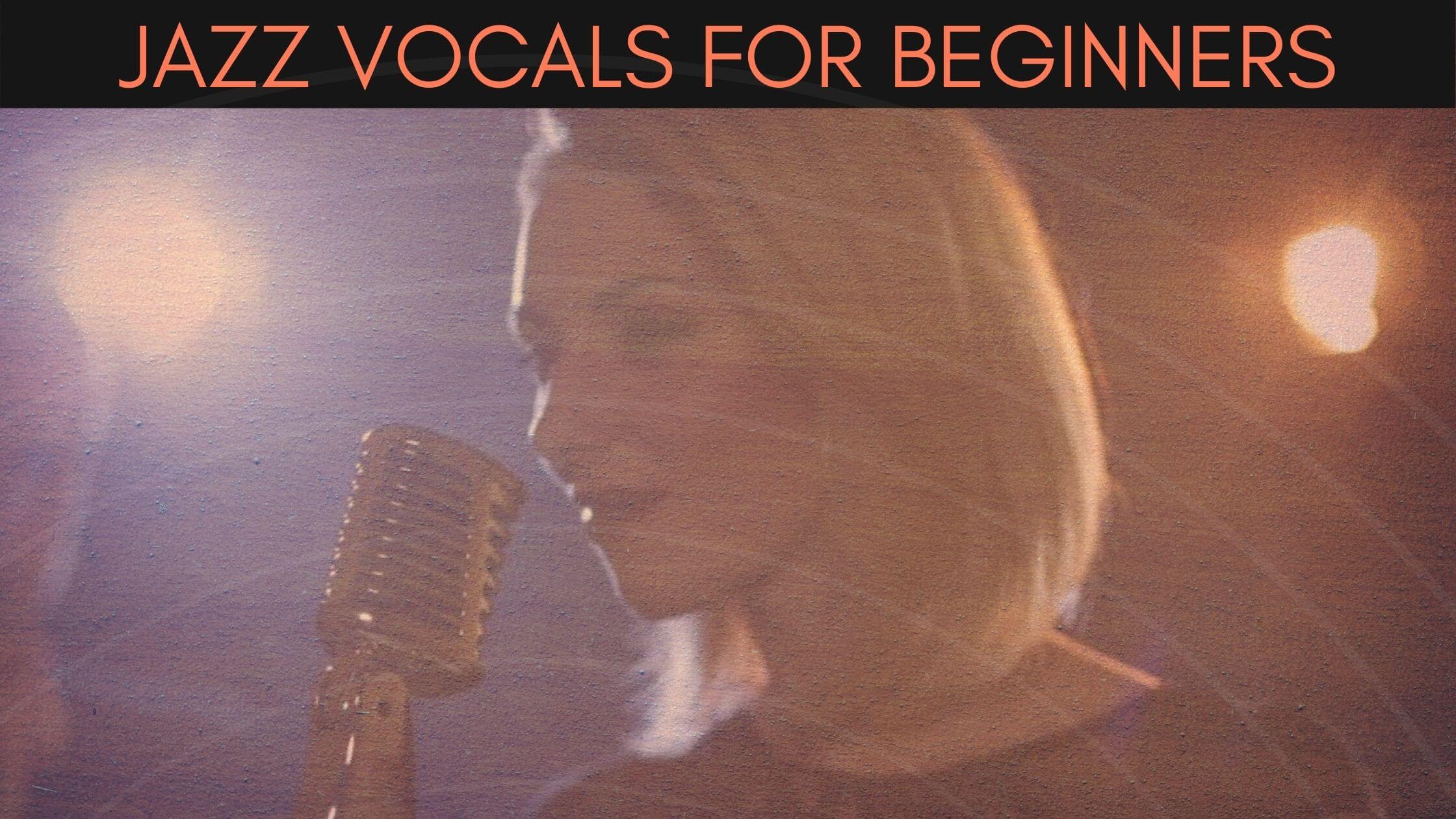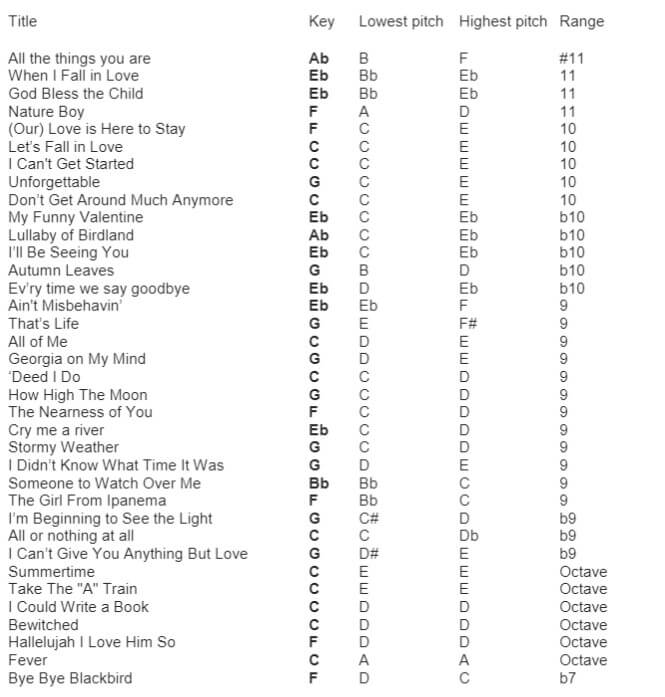Jazz Vocals For Beginners
July 2, 2021
Jazz Vocal Style + Jazz Standards For Beginners
Camille van Niekerk
This article will give you an introduction to jazz vocals with musical examples from singers like Frank Sinatra, Ella Fitzgerald, Nat King Cole and more.
First, jazz singers (and instrumentalists) understand how to swing. See this short video for an example of “straight” rhythm vs “swing” rhythm: https://youtu.be/bKV_VLxLwAs. Swing rhythm gives a relaxed, somewhat “looser” feel to the music. In the following example, “The Way You Look Tonight”, you can hear a similar swing rhythm played on the hi-hat cymbal. You can also hear Frank Sinatra fit right into this rhythm and the relaxed feel it creates: https://youtu.be/h9ZGKALMMuc.
“The Way You Look Tonight” is also an excellent example of back phrasing, which is a type of phrasing in which the vocalist sings ahead of or behind the beat. You can hear Frank begin singing “on the beat” and then slowly start to fall “behind the beat” as he sings “I will feel a glow just thinking of you”. It sounds like he’s taking his time - like he’s even arriving slightly late. But he catches back up to the beat on the word “you” and concludes that verse with an “on the beat” delivery of “and the way you look tonight”. Listen again to verse 1 and see if you can identify this back phrasing!
Jazz vocalists tend to use vibrato as an effect rather than a constant, as classical singers tend to. Listen to Chet Baker sing “I Fall in Love Too Easily” and notice how most of his phrases consist of straight tone, with vibrato just “softening” the endings: https://youtu.be/3zrSoHgAAWo.
Compare Chet Baker’s vibrato usage to Billie Holiday’s in “Blue Moon”: https://youtu.be/ntDnwBiORu8. You’ll notice Billie’s vibrato is more pronounced and has a “fluttering” quality. This songis also a great example of varying the melody and adding unique vocal effects. Listen to the way Billie sings the phrase “without a dream in my heart”, scooping up on the word “in”. She uses that effect throughout the song, making it part of her signature style.
Another aspect of vocal jazz is scat singing, in which the singer creates a melody using syllables and phrasing inspired by instrumental solos. Listen to “All of Me” sung by Sarah Vaughan. She begins withthe melody, then about 1 minute in, shebreaks into a scat solo: https://youtu.be/C43OA2qAAY4.
Some of the most famous jazz vocalists were also instrumentalists, like Louis Armstrong. Listen to his trumpet solo open and close the song, with his signature vocals in the middle: https://youtu.be/8IJzYAda1wA. Louis didn’t sound like anyone else. He didn’t have the smooth vocals of Frank Sinatra or Nat King Cole, but his almost “gravelly” tone (along with his trumpet playing) made him a jazz legendwith an unforgettable sound.
Speaking of Nat King Cole, listen to his version of “When I Fall In Love” for another beautiful example of back phrasing: https://youtu.be/GfAb0gNPy6s. This is a song that doesn’t require vocal acrobatics, complex rhythms, or scat singing -just Nat’s pure, warm tone and effortless delivery.
Finally, the queen of jazz: Ella Fitzgerald. Listen to her rendition of “These Foolish Things” and notice how she uses the different registers of her voice: low and rich or high and sweet, Ella doesn’t sound exactly the same from the top to the bottom of her range. Rather, she uses those tonal differences to add even more expression to her singing: https://youtu.be/aJZOUXtDCn0.
If you’re a beginner looking to start singing jazz, here are a few quick tips for you, followed by a list of songs with their ranges.
1. Immerse yourself in jazz: both vocal and instrumental! Create a station on your streaming service of choice or search for playlists on YouTube and get listening!
2. Train your ears: jazz singing requires much more chromaticism than other genres! That can be a challenge for singers without an experienced ear. Get a jump start with a free app like one of these: https://musiciantuts.com/ear-training-apps/.
3. Learn about the elements of jazz with the Lincoln Center’s JAZZ academy, the world’s largest free library of jazz lessons: https://www.youtube.com/user/jalcjazzacademy.
4. For jazz pianists and vocalists, check out the YouTube channel of jazz educator Aimee Nolte, starting with her demonstration of jazz phrasing: https://www.youtube.com/watch?v=9E_adydkQqo&t=257s.
Lead sheets* for the following songs can be found here: http://web.eecs.umich.edu/~hero/Preprints/JAZZFAKE.PDF.
Songs not found within the above PDF book are:
-“Georgia on my mind”: http://assets.optomus.com/documents/Music%20Scores/Ray%20Charles%20-%20Georgia%20On%20My%20Mind.pdf
-“My Funny Valentine”: https://musescore.com/static/musescore/scoredata/gen/1/2/9/4987921/713e1ca090819126957e41396fd338a8f4040ba7/score_0.svg?no-cache=1531731875
-“Nature Boy”: http://www.mzm.dk/rmc_info/materiale/lead-sheet/nature_boy.PDF
-“Someone to Watch Over Me”: http://zangprofs.nl/wp-content/uploads/2016/02/Gerschwin-Someone-to-watch-over-me.pdf
-“The Nearness of You”: https://saigonocean.com/nhac-co-notes/NQ-html/The%20Nearness%20of%20You.pdf
*Please note that you can change the key of a song, which will shift the lowest and highest pitches with it, but you can’t change the range (or the span of the melody). Beginners will have an easier time singing songs with a narrower range of a9thorsmaller, found in the bottom half of this list. As you begin to learna specific song, find a version of thatsong with a singer whose range is close to your own, and include their name in your search for a karaoke track.



